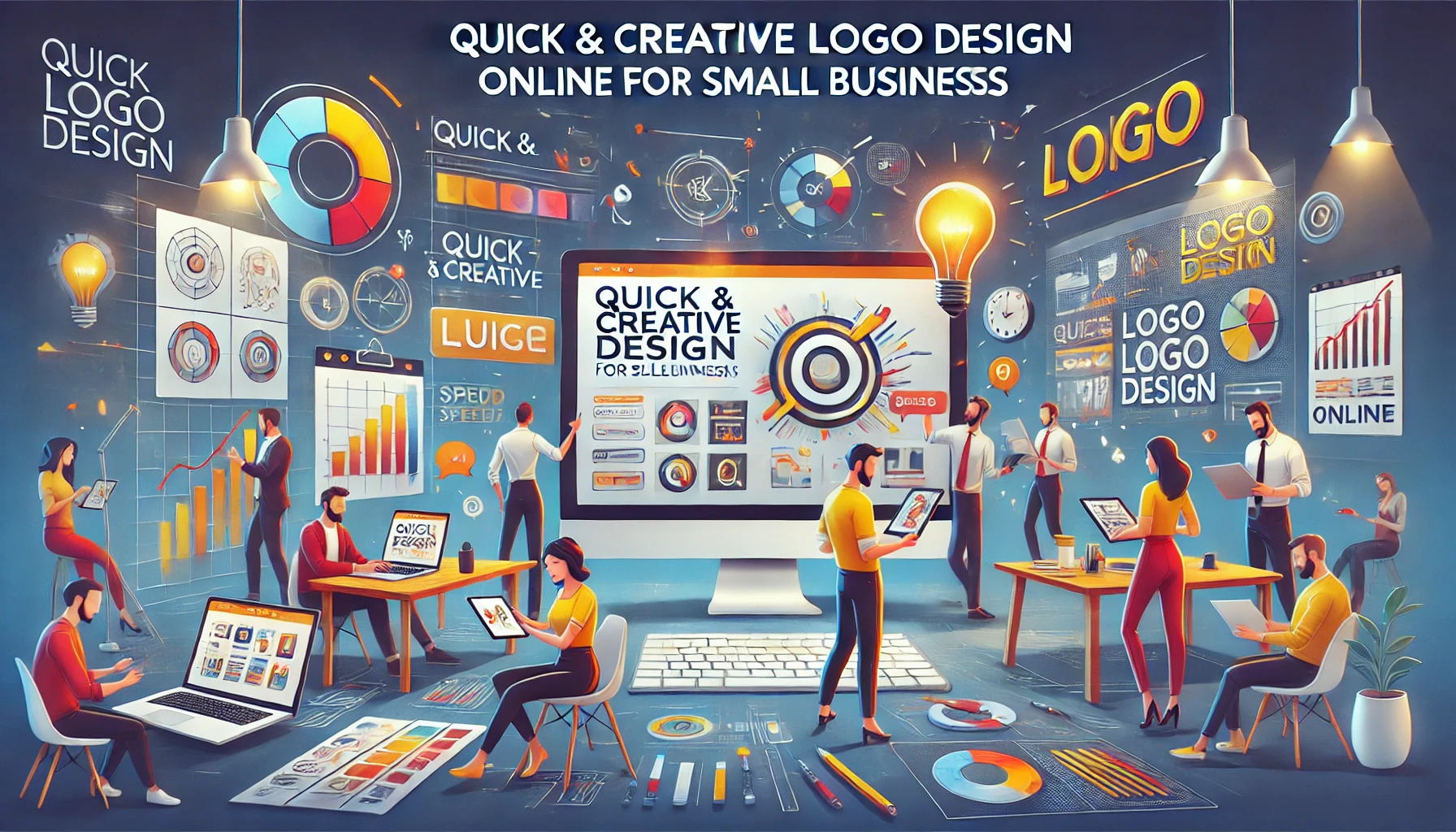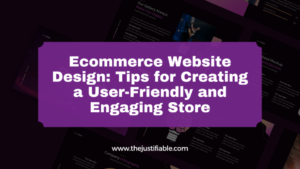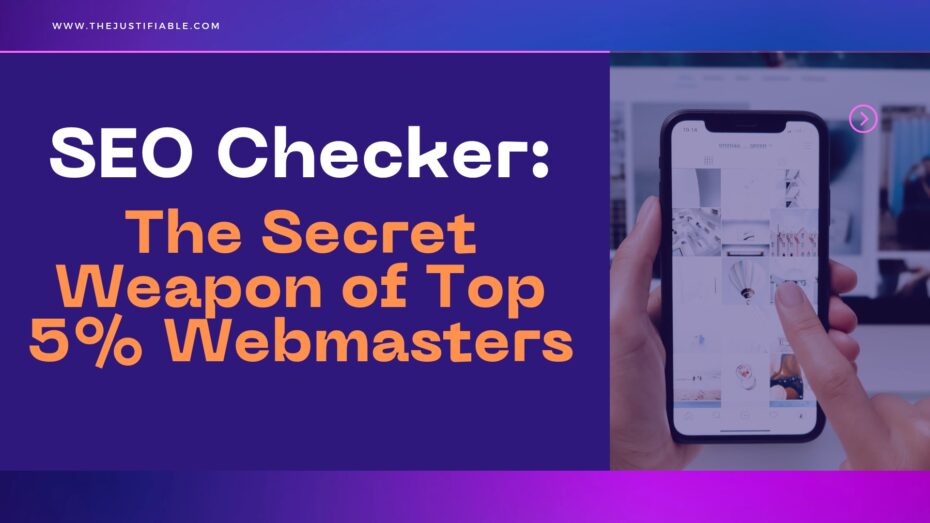Are you wondering how to master logo design online to create a unique and professional identity for your business? Have you struggled to find tools or tips that simplify the process while delivering exceptional results?
In this article, we’ll explore the essential steps, best practices, and tools to help you craft a logo that truly reflects your brand. Whether you’re a small business owner or a budding entrepreneur, get ready to unlock the secrets of designing a standout logo online—quickly and effortlessly!
Introduction to Logo Design Online
Creating a logo is one of the most crucial steps in establishing a brand identity. For small businesses, logo design online offers a quick and affordable way to craft professional logos without hiring expensive designers. Let’s explore what it means and why it’s a game-changer for entrepreneurs.
What Is Logo Design Online and Why Is It Essential?
Logo design online refers to the use of web-based platforms that enable individuals and businesses to create logos using intuitive tools, pre-designed templates, and advanced customization features. It’s a convenient option for small businesses seeking to establish their brand identity without breaking the bank.
A logo serves as the face of your brand—it’s often the first impression customers have. Online tools make it possible to create logos that reflect your brand’s values, appeal to your audience, and stand out in a competitive market. What makes these tools essential is their accessibility; anyone, regardless of design expertise, can use them effectively.
Take, for instance, the ease of using AI-powered platforms. They guide users step-by-step, suggesting designs tailored to their industry and preferences. This ensures even those with no design background can achieve impressive results. Beyond accessibility, these tools help bridge the gap between creativity and affordability, a common challenge for small businesses.
Key Benefits of Using Online Tools for Logo Design
Online logo design tools come packed with features that make them a preferred choice for small businesses. They offer:
- Cost Efficiency: Most platforms operate on affordable pricing models, with free trials or one-time payments.
- Ease of Use: Their user-friendly interfaces eliminate the steep learning curve often associated with traditional design software.
- Customization Options: These tools provide countless templates, fonts, and colors to cater to various industries.
Additionally, online platforms empower small businesses to experiment with multiple logo styles before finalizing their design. This flexibility means you can refine your logo until it perfectly encapsulates your brand’s essence. And the ability to download scalable vector files ensures your logo looks sharp, whether on a business card or a billboard.
Challenges Small Businesses Face in Logo Creation
Despite the benefits, small businesses often encounter obstacles when creating a logo. These include:
- Budget Constraints: Hiring a professional designer can be expensive, leaving startups with limited design options.
- Lack of Expertise: Without a clear understanding of design principles, many struggle to create logos that effectively communicate their brand message.
- Time Limitations: Entrepreneurs often juggle multiple responsibilities, leaving little time for the creative process.
However, online logo makers address these pain points by offering a solution that’s affordable, efficient, and accessible to all skill levels. By streamlining the process, these tools ensure even the smallest businesses can compete visually in their respective industries.
Why Choose Online Logo Design Tools?
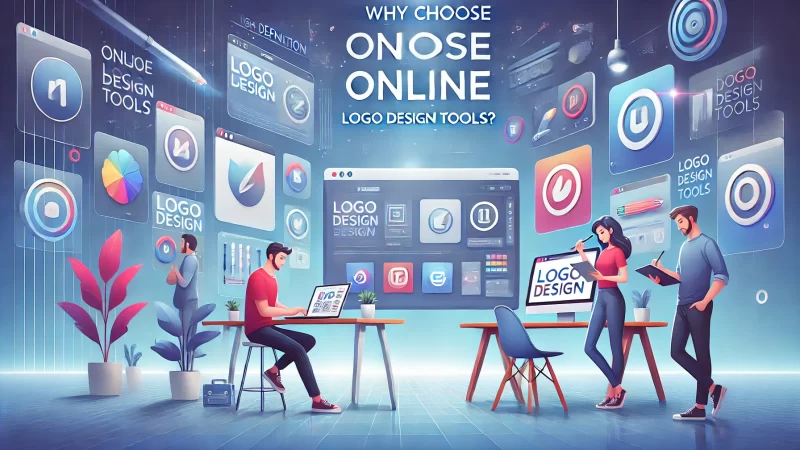
Online logo design tools have revolutionized branding for small businesses by providing a simple, cost-effective way to create professional logos. Let’s delve into why they’ve become a go-to resource for entrepreneurs.
Cost-Effective Solutions for Small Businesses
Budget-friendly solutions are a major draw of online logo design platforms. Traditional designers can charge hundreds to thousands of dollars, but online tools provide comparable quality at a fraction of the cost.
For example, platforms like Looka and Canva offer scalable pricing, from free basic designs to affordable premium packages. These options allow small businesses to control their expenses while still achieving high-quality results. Moreover, the transparency in pricing means businesses can avoid unexpected costs, a common issue with traditional design services.
Saving on logo design means small businesses can allocate resources to other critical areas like marketing or product development. With these savings, even startups with tight budgets can compete visually with larger brands.
Time-Saving Advantages of Online Logo Makers
One of the most significant benefits of online tools is how they expedite the logo creation process. These platforms are designed to deliver results quickly, making them perfect for business owners short on time.
With pre-designed templates and automated processes, users can generate multiple logo concepts in minutes. Additionally, many tools feature AI-powered customization, enabling you to fine-tune elements like fonts, colors, and layouts without starting from scratch.
For example, small business owners can input their industry and brand preferences, and the tool will generate tailored logo options. This streamlined approach eliminates hours of back-and-forth often involved with traditional design methods.
Customization Features Tailored to Business Needs
Online logo design platforms are highly versatile, offering customization options that cater to various industries and branding requirements. These features ensure your logo aligns perfectly with your business identity.
- Template Variety: Choose from thousands of industry-specific designs.
- Flexible Design Elements: Customize fonts, colors, and icons to reflect your brand’s unique personality.
- Advanced Tools: Many platforms allow users to tweak designs manually or opt for AI suggestions.
For instance, Looka’s platform allows businesses to preview how their logo will appear on mockups like business cards and websites. This real-world visualization ensures that the final design works across all branding touchpoints, from digital to print.
By tailoring designs to fit your specific needs, these tools help you create a logo that not only looks professional but also communicates your brand story effectively.
How to Start Logo Design Online: A Step-by-Step Guide
Starting with logo design online can seem daunting at first, but the right approach simplifies the process dramatically. With proper planning and tools, you can create a logo that represents your business effectively. Let’s explore the steps to get started.
Preparing for the Design Process
Before jumping into design tools, take time to prepare. This preparation ensures that your logo aligns with your business goals and brand identity.
Start by defining your brand. What message should your logo convey? Consider the emotions, values, and tone that resonate with your audience. For example, bright colors can symbolize energy, while muted tones convey sophistication. List adjectives and ideas that describe your business to guide your design choices.
Research is also crucial. Look at competitor logos and note trends or recurring elements in your industry. This doesn’t mean copying, but observing what works and identifying gaps can inspire unique ideas for your logo.
Finally, decide on the type of logo you want. Whether it’s text-based, icon-driven, or a combination of both, this decision influences the templates or designs you’ll explore later. A clear vision streamlines the design process and minimizes indecision.
Choosing the Right Online Platform for Your Business
Selecting the right platform is critical to your logo’s success. Not all platforms are equal, and your choice should depend on your specific needs and preferences.
Start by evaluating platforms based on their features. Tools that offer customization, user-friendly interfaces, and a range of templates are ideal. If you’re new to design, opt for platforms with AI-powered features that simplify the process.
Consider your budget. Many platforms offer free trials or low-cost options for basic designs, while premium features allow for advanced customization. Platforms with transparent pricing help you avoid unexpected costs, making them a reliable choice for small businesses.
Lastly, test the platform before committing. Use demo versions or explore reviews to ensure the platform aligns with your expectations. This step prevents wasted time and ensures the platform supports your vision for your logo.
Exploring Logo Templates and Design Options
Templates are a great starting point for creating your logo. They provide a foundation that you can customize to fit your brand’s identity.
Explore templates that match your industry or design preferences. For example, if you run a fitness business, templates with bold fonts and dynamic shapes might be suitable. Retail businesses might prefer modern, minimalistic designs with clean lines.
Once you select a template, personalize it. Change colors, fonts, and icons to reflect your brand. Adjust spacing or layouts to ensure your logo feels balanced and professional. Small tweaks can transform a standard template into a unique design tailored to your business.
Don’t rush this step. Experiment with different styles and gather feedback from trusted colleagues or friends. A fresh perspective often highlights improvements you might have missed.
Top Features to Look for in Logo Design Online Tools

When selecting a logo design tool, certain features can enhance your experience and final product. Prioritize tools that offer flexibility, ease of use, and advanced customization to ensure a successful design process.
AI-Powered Design Capabilities
AI-powered features have revolutionized logo design, making it accessible for everyone. These tools analyze your preferences and provide tailored suggestions, saving time and effort.
For example, AI can recommend designs based on your industry and preferred style. This eliminates guesswork and helps you find options that match your vision. AI also automates adjustments, like resizing logos or suggesting complementary fonts, which ensures professional results without extensive manual work.
Another advantage is speed. AI tools generate multiple options in minutes, allowing you to focus on selecting and refining rather than starting from scratch. This efficiency is a game-changer, especially for small business owners managing multiple tasks.
Vast Template Libraries for Various Industries
A comprehensive template library is essential for a good design tool. These libraries provide a range of options suitable for different industries and branding styles.
Templates categorized by themes, industries, or aesthetics make it easy to find something relevant. For example, restaurants might look for templates with organic, earthy designs, while tech startups could explore modern, futuristic layouts.
Ensure the platform offers fully customizable templates. You should be able to change every element of the design to reflect your business’s unique identity. A library with diverse options allows you to explore and refine your ideas without limitations.
Editing Options for Unique Customization
Customization options are where online logo design tools truly shine. These features allow you to make your logo uniquely yours.
Look for tools with intuitive editing capabilities. For instance, the ability to modify colors, adjust fonts, and replace icons ensures your logo matches your brand’s personality. Custom color palettes help maintain brand consistency, while font customization conveys your desired tone—formal, playful, or innovative.
Many platforms also let you preview your logo in real-world applications, such as on business cards, signage, or digital platforms. This visualization helps ensure your design looks polished across all mediums.
Best Practices for Effective Logo Design Online
Designing an impactful logo online requires more than just selecting a template—it’s about aligning the design with your brand and ensuring its functionality across various mediums. By following best practices, you can create a logo that leaves a lasting impression.
Aligning Your Logo with Your Brand Identity
A logo should be a visual representation of your brand’s personality, values, and mission. This alignment ensures consistency and builds trust with your audience.
To start, define your brand’s identity. Ask yourself what your business stands for and what message you want your logo to convey. For instance, a playful, modern font might suit a creative startup, while a clean and elegant style is more fitting for a luxury brand. Your logo should encapsulate these attributes at a glance.
Understanding your target audience also plays a crucial role. A logo that appeals to one demographic might not resonate with another. If your audience consists of young professionals, opt for sleek, minimalist designs. For family-oriented businesses, warmer tones and friendly shapes may be more effective.
Ensure that every element of your logo—colors, fonts, and icons—reflects your brand identity. This cohesion strengthens recognition and helps you stand out in your niche.
Choosing the Right Colors, Fonts, and Icons
Colors, fonts, and icons are the building blocks of any logo, and selecting the right ones can make all the difference. Each element communicates something unique about your brand.
Colors: Colors evoke emotions and associations. For instance, blue often conveys trust and professionalism, while red can signify passion and energy. Choose a color palette that aligns with your brand’s personality and resonates with your audience. Limit your palette to two or three complementary colors for a clean and balanced look.
Fonts: Typography should match your brand’s tone. Serif fonts, with their classic look, suit traditional or formal businesses, while sans-serif fonts are ideal for modern, minimalist designs. Avoid overly intricate or decorative fonts that may be difficult to read at smaller sizes.
Icons: Icons should be simple and relevant to your business. A coffee shop might use a coffee cup or bean, while a tech company could incorporate a symbol of connectivity. Ensure the icon complements the typography and doesn’t overwhelm the design.
Ensuring Scalability for Various Applications
A good logo is versatile and scalable, maintaining its visual appeal whether displayed on a business card or a billboard. Scalability ensures your logo remains effective across different mediums.
When designing your logo, opt for vector-based formats, such as SVG or EPS. These formats allow your logo to be resized without losing quality, ensuring it looks sharp on both digital and print materials.
Test your logo on different applications, such as websites, social media profiles, and merchandise. Pay attention to how it looks in small sizes, like on a mobile app icon, as well as larger formats, such as banners or storefront signage.
Creating a monochrome version of your logo is another crucial step. This ensures your logo retains its impact even in black and white, which is often necessary for printing or minimalistic designs.
Quick Tips for Small Businesses Designing Logos Online

Designing a logo for a small business doesn’t have to be overwhelming. With the right approach and tools, you can create a design that effectively represents your brand. Here are some quick and actionable tips.
Starting with a Clear Vision and Business Goals
Before diving into design, take time to clarify your vision and goals. This foundational step will guide every decision you make during the design process.
Think about what your business aims to achieve and how your logo can reflect that mission. For example, if your goal is to position yourself as an eco-friendly company, your logo could incorporate earthy tones and natural imagery.
Brainstorm with your team or trusted advisors to gather ideas and inspiration. Discuss the values you want to communicate and how they can be represented visually. Having a clear roadmap ensures that your design aligns with your business objectives.
Keeping the Design Simple and Memorable
Simplicity is key when it comes to logo design. A cluttered or overly complex logo can confuse your audience and dilute your message.
Focus on one or two key elements that best represent your brand. Avoid adding too many details, as this can make your logo harder to recognize, especially at smaller sizes. Think of iconic logos like Nike’s swoosh or Apple’s apple—simple yet instantly recognizable.
Ensure your logo is memorable by incorporating unique elements. A custom font or a creative twist on a common icon can help your logo stand out while maintaining its simplicity.
Testing Your Logo on Multiple Platforms
Testing your logo across different platforms and formats ensures its effectiveness in real-world applications. This step is essential for identifying potential adjustments or improvements.
Start by previewing your logo on digital platforms, such as social media, websites, and email signatures. How does it appear on mobile screens versus desktops? Next, test it on physical items, like business cards, packaging, or uniforms, to see how it translates to print.
Gather feedback from diverse groups, including team members and potential customers. Ask them about the clarity, appeal, and relevance of your logo. Use this input to refine the design before finalizing it.
Testing your logo helps ensure it’s versatile, impactful, and ready to represent your brand across all channels.
Comparing Popular Logo Design Online Platforms
Choosing the right logo design platform can significantly impact your branding success. Let’s compare three popular platforms—Looka, Canva, and Tailor Brands—to help you find the one that fits your business needs.
Looka: Features, Pricing, and Benefits
Looka combines AI-powered technology with intuitive design tools, making it an excellent choice for small businesses and startups.
Looka’s standout feature is its AI-based design assistant, which creates personalized logo suggestions based on your business name, industry, and style preferences. This saves time and ensures that the logos are tailored to your brand’s identity. Users can fine-tune their designs by adjusting colors, fonts, and icons to achieve the perfect look.
Pricing is flexible, with one-time payments for a logo or brand kits that include business cards, social media assets, and more. The availability of scalable vector files ensures your logo looks professional across digital and print mediums.
Looka is particularly beneficial for small businesses seeking a cost-effective yet professional solution. Its user-friendly interface and AI-driven customization make it accessible even for those without design experience.
Canva: User-Friendly Interface for Beginners
Canva is a versatile design platform widely known for its drag-and-drop interface, making it ideal for beginners. Its extensive template library includes a variety of logo styles for different industries.
One of Canva’s key strengths is its ease of use. Users can select a template, customize it with text, shapes, and colors, and download the final design in minutes. This simplicity makes it a great choice for business owners who need a quick and straightforward solution.
Canva’s free plan includes basic logo creation, while premium subscriptions unlock features like transparent backgrounds, additional templates, and custom fonts. The flexibility of Canva’s pricing ensures it fits a range of budgets.
While Canva is not as specialized in logos as other platforms, its versatility allows you to design additional brand assets, such as social media posts and marketing materials, all in one place.
Tailor Brands: AI-Driven Customization
Tailor Brands focuses on delivering professional logos through its advanced AI capabilities, making it a strong contender for businesses seeking a polished design.
After entering your business details and preferences, Tailor Brands’ AI generates multiple logo options. Users can then customize their chosen design by tweaking elements like fonts, icons, and layouts. This automation streamlines the creative process while still offering a degree of personalization.
Tailor Brands also provides additional branding tools, such as website builders and business cards, for businesses looking for an all-in-one solution. Pricing is subscription-based, which includes access to other branding features beyond logo creation.
This platform is best suited for businesses that want a hands-off approach to logo design while still achieving a professional outcome.
How Looka Simplifies Logo Design Online

Looka stands out among logo design platforms by offering a balance of simplicity, customization, and professional results. Its innovative features cater specifically to small businesses, helping them create memorable logos effortlessly.
AI Features That Help Small Businesses
Looka’s AI capabilities are at the heart of its success, transforming the logo design process into a seamless experience for users.
The AI-powered design assistant generates tailored logo suggestions based on user inputs, such as industry type, preferred style, and color preferences. This ensures the designs reflect your brand’s identity from the start. For instance, if you run a tech startup, Looka’s AI might suggest sleek, modern designs with bold fonts and minimalistic icons.
Beyond logo creation, Looka’s AI can suggest branding elements, such as complementary color schemes and font pairings. These recommendations simplify decision-making, allowing small business owners to focus on running their operations rather than grappling with design complexities.
Design Templates Designed for Industry Needs
Looka offers a diverse library of templates that cater to various industries, ensuring businesses can find options that resonate with their target audience.
Each template is customizable, giving users the freedom to adjust fonts, colors, and layouts. Whether you’re a café looking for a friendly, inviting design or a law firm requiring a professional aesthetic, Looka’s templates provide a strong starting point.
The platform also offers mockups to preview how logos will appear on real-world applications, such as signage or product packaging. This ensures that your final design works effectively across all branding touchpoints.
Streamlined Process for Quick Logo Creation
One of Looka’s biggest advantages is its streamlined design process, which helps users create logos quickly without compromising on quality.
The platform guides you step by step, from entering your business details to selecting and customizing your logo. This intuitive approach eliminates guesswork, making it accessible to anyone, regardless of their design expertise.
With features like instant downloads and scalable vector files, Looka ensures you can immediately use your logo for digital and print purposes. This efficiency makes it an excellent choice for small business owners who need a professional logo on a tight schedule.
Common Mistakes to Avoid in Logo Design Online
Designing a logo online can be quick and convenient, but it’s important to avoid common pitfalls that can diminish the quality and impact of your design. By identifying these mistakes early, you can ensure your logo effectively represents your brand.
Overcomplicating the Design
A logo should be simple, clean, and easy to recognize. Overcomplicating it with too many elements can confuse your audience and make it less memorable.
Avoid adding excessive details, such as intricate patterns, multiple icons, or an overwhelming mix of colors. These elements might look good in theory but can make your logo difficult to interpret, especially when resized. For example, a logo with excessive text or busy graphics may appear cluttered on small screens or business cards.
Simplicity doesn’t mean sacrificing creativity. Focus on one key element that represents your brand, such as a strong symbol or a unique typeface. This ensures your logo is visually appealing while remaining versatile and functional.
Remember, the goal is clarity. A straightforward design is more likely to leave a lasting impression and communicate your brand’s identity effectively.
Ignoring Brand Consistency
Your logo is the cornerstone of your brand identity, and inconsistency can weaken its impact. A logo that doesn’t align with your overall branding can confuse your audience and make your business appear less professional.
Ensure your logo reflects your brand’s tone and message. For instance, if your business prioritizes sustainability, opt for earthy colors and organic shapes. If you’re in the tech industry, sleek lines and modern typography might be more appropriate.
Inconsistencies often arise when businesses change their logo without considering existing branding elements, like website design or marketing materials. Before making any changes, evaluate how the logo fits into the bigger picture of your brand strategy.
Consistency across all touchpoints, from social media to packaging, helps reinforce your identity and build trust with your audience.
Choosing the Wrong Tool for Your Business
Not all online logo design tools are created equal, and choosing the wrong one can lead to wasted time and subpar results.
Some tools are geared toward specific industries, while others offer limited customization options. If your business requires a highly detailed or unique logo, using a platform with basic templates might not meet your needs. Research platforms thoroughly before committing, ensuring they offer features that align with your vision and skill level.
Test the platform by exploring free trials or demo versions. This allows you to gauge its user-friendliness and see if it offers the creative flexibility you need. Choosing a tool that complements your requirements ensures a smoother and more enjoyable design process.
Exploring Advanced Options for Logo Design Online
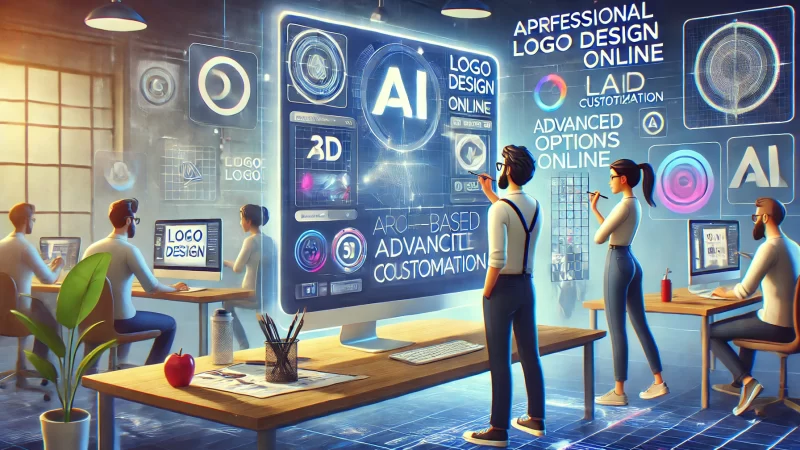
As online design tools evolve, advanced features and techniques are becoming increasingly accessible. Exploring these options can help you create a dynamic and impactful logo that enhances your brand presence.
Animation and Dynamic Logos
Animated logos are a modern trend that can bring your brand to life. Adding motion to your logo creates a dynamic element that grabs attention and makes your brand more memorable.
Animations can include simple effects, like a logo that fades into view, or more intricate designs, such as icons transforming into shapes. These are particularly effective for digital platforms, where movement can increase engagement. For example, a subtle animation of a leaf unfurling could work beautifully for an eco-friendly business.
However, use animation sparingly to avoid overwhelming your audience. Animated logos should still align with your brand’s identity and messaging, enhancing rather than detracting from your overall aesthetic.
Integrating Your Logo into Marketing Materials
A well-designed logo is more than just a visual element; it’s a powerful branding tool that should seamlessly integrate into your marketing materials.
Consider how your logo will appear across various platforms. For example, on business cards, it should look sharp and professional, while on promotional banners, it needs to maintain visual impact at larger scales.
Digital marketing materials, such as email headers and website banners, also require your logo to be optimized for web display. Use vector formats for scalability and ensure your logo adapts well to both light and dark backgrounds.
The more consistently you incorporate your logo into your materials, the more recognizable your brand becomes, fostering familiarity and trust with your audience.
Creating Logos for Social Media and Digital Ads
Social media and digital advertising require logos that are tailored for these specific platforms. This often involves resizing or reformatting your logo to maintain clarity and appeal.
For social media profiles, square dimensions are key, so ensure your logo fits neatly into this format without losing important details. Similarly, for ad campaigns, logos should be designed with a focus on readability and visual impact, even in small sizes.
Platforms like Instagram, Facebook, and LinkedIn have unique specifications, so create variations of your logo that cater to these needs. For example, a simplified version of your logo might work better for smaller ad placements, while the full logo could be used for larger banners or profile headers.
By optimizing your logo for social media and ads, you ensure it looks professional and resonates with your audience across all digital channels.
Evaluating the Success of Your Online Logo Design
Once you’ve created your logo, it’s essential to evaluate its effectiveness. This involves gathering feedback, analyzing engagement, and refining your design to ensure it aligns with your branding goals.
Gathering Feedback from Your Target Audience
Feedback is invaluable when assessing the impact of your logo. Your target audience’s opinions provide insights into how well your design resonates with them.
Start by sharing your logo with a small group of customers, colleagues, or industry peers. Ask specific questions like, “What emotions does this logo evoke?” or “Does it align with the brand’s message?” Their responses can reveal whether your logo communicates the desired impression.
Another effective method is conducting surveys. Use online tools like Google Forms or SurveyMonkey to reach a broader audience and collect quantitative data. Include image comparisons if you’re choosing between multiple logo variations to identify the most appealing option.
Social media platforms are also a great avenue for gathering feedback. Post your logo as part of a poll or ask followers for their thoughts in the comments. These interactions not only provide useful input but also engage your audience.
Measuring Engagement and Brand Recognition
Evaluating how your logo performs in the real world is just as important as initial feedback. Engagement metrics can provide tangible evidence of your logo’s effectiveness.
Track website analytics to see if branding updates have influenced visitor behavior. For instance, a new logo might result in increased page views, lower bounce rates, or higher conversion rates. Similarly, monitor interactions on social media, such as likes, shares, and comments, to gauge audience response.
Brand recognition is another critical factor. If your logo is being consistently associated with your business, it’s doing its job. Conduct brand recall studies where participants identify your logo without additional context. This helps measure how well your design sticks in the minds of consumers.
Combine these data points with qualitative insights to get a holistic view of your logo’s success.
Refining the Design Based on Feedback
No logo is perfect right out of the gate, and refining your design based on feedback ensures it reaches its full potential.
Start by reviewing the common themes in the feedback you’ve received. Are there consistent suggestions about color, font, or layout? Address these areas to create a more polished and effective design.
When making revisions, ensure changes align with your brand’s identity. For example, if feedback suggests your logo looks too corporate for a family-friendly brand, soften the design with warmer colors and rounded fonts.
Test the updated logo with a fresh group of reviewers to validate the improvements. This iterative approach helps you fine-tune your logo until it perfectly represents your brand.
The Power of Logo Design Online for Small Businesses
Logo design online has revolutionized branding for small businesses, offering affordable, accessible, and professional solutions. With the right tools and strategies, even businesses with limited resources can create impactful logos.
Encouragement to Explore Online Design Tools
I suggest exploring the variety of online design tools available to kickstart your branding journey. These platforms make it easy to experiment with colors, fonts, and styles, even if you don’t have prior design experience.
Don’t hesitate to invest time in understanding your brand’s values and how they can be visually represented. A well-crafted logo is more than just a design—it’s a reflection of your business’s personality and promise to customers.
Take advantage of free trials and design tutorials to find the best platform for your needs. The flexibility of online tools empowers small businesses to create logos that rival those of larger companies.
Final Thoughts on Building a Strong Brand Identity
A strong brand identity starts with a memorable logo, but it doesn’t end there. Incorporate your logo consistently across all platforms and marketing materials to build recognition and trust.
Remember, your logo is the first step in establishing your business in the minds of customers. By investing in thoughtful design and continuous refinement, you’ll create a brand that resonates with your audience and stands the test of time.
The journey to creating the perfect logo is a valuable learning experience that strengthens your understanding of your business and its place in the market. Now is the time to take the next step and craft a logo that leaves a lasting impression.


